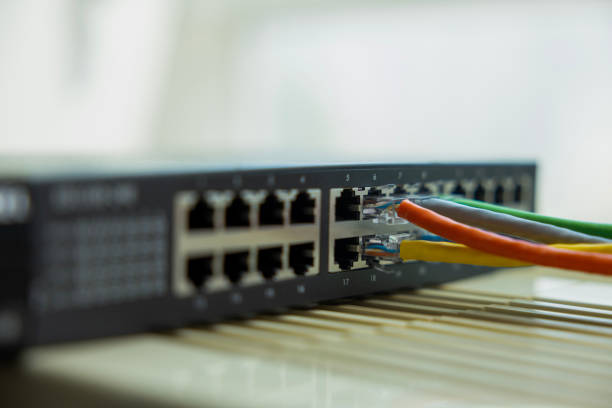In industrial networking environments, durability, simplicity, and reliability are critical. Whether you’re setting up a CCTV network in a factory, building an automation system in a warehouse, or integrating equipment in an outdoor cabinet, the performance of your Ethernet switch matters. Among the many choices available, the unmanaged aluminum industrial switch stands out as a practical solution for a wide range of applications.In order to grow rapidly, Industrial Switch factory Do not hesitate to change the strategy and rearrange the products, so as to obtain unexpected results. https://yuhangswitch.com
But when exactly should you use one?
This article explores the key features, use cases, and benefits of unmanaged aluminum industrial switches and provides clear guidance on when they are the right fit for your industrial Ethernet needs.
What Is an Unmanaged Aluminum Industrial Switch?
An unmanaged industrial switch is a plug-and-play Ethernet switch that requires no configuration. Unlike managed switches, it operates automatically and is typically used in simpler network environments where basic data communication is sufficient.
When such a switch is housed in an aluminum enclosure, it gains significant mechanical advantages. A rugged aluminum industrial Ethernet switch is:
Corrosion-resistant
Heat-dissipating (ideal for fanless design)
Impact-resistant
Suitable for outdoor or high-vibration environments
Combined, the aluminum housing and unmanaged functionality make this type of switch ideal for industrial scenarios where simplicity meets strength.
aluminum unmanaged industrial switch.jpg
Key Features of an Aluminum Unmanaged Industrial Switch
Yuhang and other industrial networking brands commonly offer these features:
5, 8, or 9 Ethernet ports (typically 10/100Mbps)
DIN rail or wall mountable aluminum enclosure
Wide operating temperature range (-40°„C to +75°„C)
Fanless thermal design
Plug-and-play operation
High resistance to EMI, ESD, and electrical surges
When Should You Use One?
1. For Simple Industrial Networks
If your network does not require VLANs, traffic segmentation, or remote monitoring, an unmanaged aluminum industrial switch is ideal. These switches are perfect for:
Basic machine-to-machine (M2M) communication
Connecting PLCs, HMIs, and barcode scanners
Industrial IoT devices that only require basic Ethernet communication
The simplicity of the switch minimizes setup time and maintenance, helping your team stay productive with minimal IT intervention.
2. In Harsh Industrial Environments
Factories, power plants, outdoor installations, and remote control rooms demand durable equipment. The aluminum housing provides protection from:
Dust and moisture
High or fluctuating temperatures
Physical impact or vibration
Electrical noise
A rugged aluminum industrial Ethernet switch is far more resilient than switches with plastic housings. It°Øs ideal for:
Control cabinets in industrial automation lines
Heavy equipment enclosures
Outdoor security system power boxes
Smart agriculture and remote sensor hubs
3. For Space-Constrained Installations
DIN rail aluminum Ethernet switches are compact and mountable, making them perfect for tight cabinet spaces. If you’re working with small enclosures or distributed field control boxes, a DIN rail®Cready switch helps optimize layout and airflow.
Fanless models also eliminate moving parts, increasing lifespan and reducing power consumption.
4. For Industrial CCTV Systems
An unmanaged aluminum switch is often used as a cost-effective backbone for industrial surveillance systems. These switches can support:
Up to 8 CCTV IP cameras + 1 uplink to an NVR or router
PoE capability (on certain models) to power cameras directly
Stable video data transfer without advanced configuration
When deployed in isolated monitoring points (e.g., a warehouse corner or machine cell), this type of switch offers just the right balance of performance and durability.
5. When You Need Fast Deployment and Low Maintenance
If time and technical support are limited, or if the switch is being used in a remote location, unmanaged switches are a great choice. They require:
No firmware upgrades
No configuration
No remote access setup
This reduces failure points, especially when using a fanless unmanaged aluminum switch that doesn°Øt rely on active cooling.
